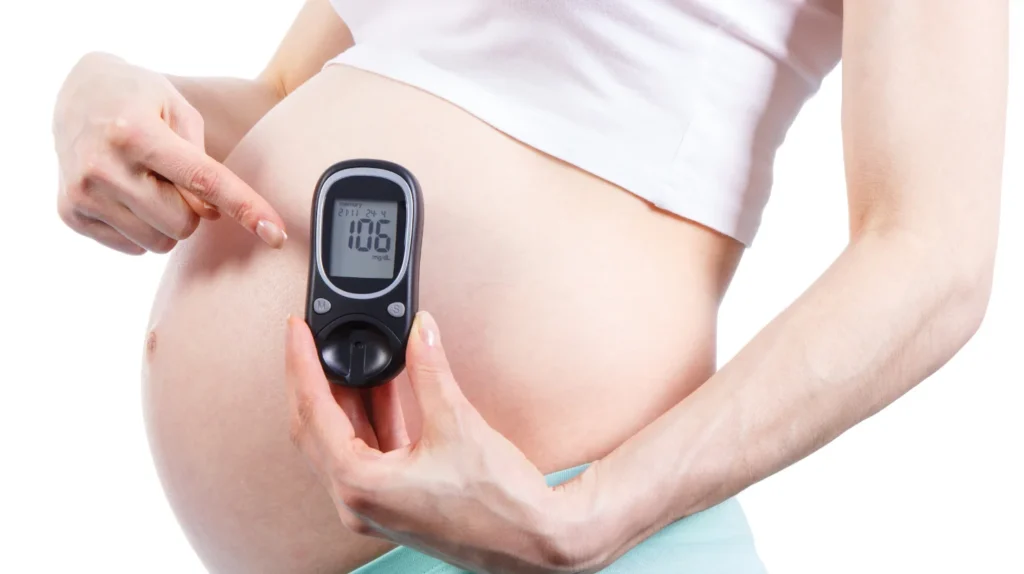Pregnancy is a journey filled with anticipation and joy, but it’s not without its challenges. Complications can arise that demand the expectant mother’s attention and care.

In this comprehensive guide, we will explore common complications of pregnancy, their symptoms, and effective strategies to manage them. You’ll gain a deeper understanding of these issues, helping you navigate this significant stage of your life with knowledge and confidence.
Understanding Pregnancy Complications: A Brief Overview
Pregnancy is a miraculous journey that a woman embarks on, filled with hopes and dreams of welcoming a new life into this world. However, it’s also a time of great physiological change, and at times, it can give rise to various pregnancy complications. These complications can range from mild discomforts, like nausea and vomiting during early pregnancy, to more severe health problems during pregnancy, such as preeclampsia and gestational diabetes. This article provides a comprehensive exploration of some common complications of pregnancy, aiming to equip expecting couples with the necessary knowledge to navigate any challenges that may arise.
The first half of pregnancy, specifically the first 20 weeks, can be particularly volatile, with complications such as ectopic pregnancies or miscarriages more likely to occur. Miscarriages, or the loss of a pregnancy, are one of the most common pregnancy complications. The causes can be many, but they lead to one outcome – the heartbreaking loss of the unborn child. It’s crucial for expectant mothers to attend regular prenatal check-ups during these initial weeks of pregnancy, as early detection and management can significantly improve the outcome in many cases.
Hyperemesis Gravidarum: Beyond Morning Sickness

What is Hyperemesis Gravidarum?
Hyperemesis gravidarum is a severe form of nausea and vomiting during pregnancy that goes beyond the typical “morning sickness” many women experience during early pregnancy. This condition often requires hospitalization to manage dehydration and ensure both the mother’s and the baby’s safety. It occurs in about 0.3% to 3% of pregnancies and is one of the most common reasons for hospitalization during the first half of pregnancy.
Women with hyperemesis gravidarum may experience relentless nausea, vomiting, weight loss, and electrolyte disturbances. These symptoms can make it hard for the woman to perform everyday activities and can significantly affect her quality of life. The exact cause of hyperemesis gravidarum is unknown, but it’s thought to be related to hormone changes that occur during pregnancy.
Management and Treatment
The first line of treatment for hyperemesis gravidarum usually involves replenishing fluids and electrolytes through intravenous therapy. Anti-nausea medications may be prescribed to help control the symptoms. In more severe cases, hospitalization may be required to provide nutritional support through a tube that goes directly into the bloodstream or stomach.
Given the intensity of the symptoms and the potential complications, early detection and management are critical. This can help reduce the risk of complications and ensure a healthier pregnancy. It’s important for women experiencing severe nausea and vomiting during pregnancy to seek medical help immediately.
Ectopic Pregnancy: An Early Pregnancy Concern

Ectopic Pregnancy: A Closer Look
An ectopic pregnancy is a pregnancy complication where the fertilized egg implants outside of the uterus, most commonly in the fallopian tube. This type of pregnancy occurs in 1 to 2% of all pregnancies and can lead to severe complications if not promptly treated. Because the fertilized egg cannot survive outside the uterus, an ectopic pregnancy cannot proceed normally and often ends in loss of pregnancy.
Symptoms of an ectopic pregnancy may include abdominal pain, vaginal bleeding, and symptoms of pregnancy like a missed period. However, it’s possible to have an ectopic pregnancy without experiencing these classic symptoms, making it harder to diagnose. This makes ectopic pregnancies a common cause of serious problems during early pregnancy.
Management of Ectopic Pregnancies
The treatment for ectopic pregnancy involves the removal of the ectopic tissue. This can be accomplished with medication like methotrexate, which stops cell growth and dissolves existing cells, or through surgery.
It’s important to note that an ectopic pregnancy can have emotional as well as physical effects. The loss of a pregnancy can be a traumatic experience, and it’s important to seek both physical and emotional care after such an event.
Miscarriages: Coping with Pregnancy Loss

Understanding Miscarriages
A miscarriage, also known as pregnancy loss, is an event that results in the loss of a fetus before the 20th week of pregnancy. Miscarriages are a common pregnancy complication, occurring in about 10-20 percent of known pregnancies. The actual number is likely higher because many miscarriages occur so early in pregnancy that a woman doesn’t realize she’s pregnant.
Miscarriages can be caused by a variety of factors, including chromosomal abnormalities, improper implantation of the egg into the uterine lining, maternal health conditions, or age. Symptoms of a miscarriage might include spotting, moderate to severe back pain, severe abdominal pain, and contractions.
Coping with the Loss
Experiencing a miscarriage can be an emotionally devastating event. The grief that follows the loss of a pregnancy can be profound. It’s important to allow yourself to grieve and to seek the support of loved ones and professionals.
Moreover, medical follow-up after a miscarriage is essential. In some cases, treatment may be needed to prevent complications. This can include a procedure known as dilation and curettage (D&C) to remove the pregnancy tissue. In other cases, the body will expel the pregnancy tissue without intervention.
Infections During Pregnancy: Preventing and Managing the Risks

Impact of Infections
Certain infections can cause serious complications during pregnancy, both for the pregnant woman and her baby. Some infections can be transmitted to the baby during pregnancy or delivery, resulting in neonatal infection. Depending on the type of infection and the stage of pregnancy when the infection is acquired, consequences for the baby can range from low birth weight and premature birth to more severe outcomes like stillbirth or developmental problems.
Common infections that can cause complications during pregnancy include urinary tract infections, group B streptococcus, sexually transmitted infections, and certain foodborne illnesses.
Preventing and Managing Infections
Preventing infections during pregnancy is an important part of prenatal care. This includes practicing good hygiene, avoiding certain foods, getting vaccinated, and safe sexual practices.
If an infection is detected during pregnancy, prompt treatment can often prevent complications. The specific treatment will depend on the type of infection. For instance, antibiotics are typically used to treat bacterial infections.
Regular prenatal care is crucial for identifying and managing infections during pregnancy. Prenatal visits allow doctors to detect infections, provide treatment, and monitor the health of both the woman and her baby throughout the pregnancy.
High Blood Pressure in Pregnancy: Managing the Risk

Exploring High Blood Pressure During Pregnancy
High blood pressure, or hypertension, during pregnancy, can place extra stress on your heart and kidneys. This can lead to heart disease, kidney disease, and stroke. High blood pressure can also cause low birth weight and early delivery.
High blood pressure can occur for the first time during pregnancy (gestational hypertension), or a woman may have been already dealing with it before becoming pregnant (chronic hypertension). Another type is preeclampsia, a serious pregnancy complication related to high blood pressure, which is discussed later in this article.
Strategies for Management
Managing high blood pressure during pregnancy might involve a combination of lifestyle modifications and medications. Healthy eating, regular physical activity, avoiding alcohol and tobacco, and staying at a healthy weight are lifestyle changes that can help manage high blood pressure.
Medications may also be needed to safely control high blood pressure during pregnancy. It’s essential to discuss with your doctor to understand the safest choice for you and your baby. Regular prenatal visits are crucial as they allow your healthcare provider to closely monitor your blood pressure and the health of your baby.
Preeclampsia: A Silent Threat to Pregnancy

Unveiling Preeclampsia
Preeclampsia is a serious complication of pregnancy that usually emerges after the 20th week, and is marked by high blood pressure and potential damage to other organs, most commonly the liver and kidneys. It most frequently occurs in women whose blood pressure was previously normal and can result in significant complications for both mother and baby if not swiftly addressed. The presence of protein in the urine is a key indicator of this condition.
The root cause of preeclampsia is not yet fully understood, but certain risk factors have been identified. These include first-time pregnancies, pre-existing hypertension, expecting multiple babies, and maternal age over 35. Symptoms to watch out for include persistent headaches, visual disturbances such as seeing spots or experiencing flashing lights, intense pain in the abdomen, and sudden swelling in the face and hands. Importantly, untreated preeclampsia can lead to eclampsia, a severe condition that can cause seizures and is a major cause of maternal and fetal mortality.
Managing Preeclampsia
The most effective treatment for preeclampsia is the delivery of the baby. However, if it’s too early in your pregnancy, delivery might not be the best thing for your baby. In such cases, your doctor may recommend managing the symptoms through medications and regular prenatal care, which may involve more frequent visits or possibly hospitalization.
Even after delivery, complications of preeclampsia continue to exist. Postpartum preeclampsia can develop, which necessitates continuing care under a healthcare professional even after the birth of the baby. Awareness of the signs and symptoms and regular monitoring of blood pressure post-delivery are key steps in managing the risk.
Gestational Diabetes: An Unexpected Twist

Recognizing Gestational Diabetes
Gestational diabetes is a type of diabetes that occurs only during pregnancy, affecting how your cells use sugar (glucose). Although gestational diabetes usually goes away after your baby is born, it can increase your risk for type 2 diabetes later in life. It can also lead to your baby growing larger than normal, which can increase the likelihood of injuries during delivery or the need for a C-section.
Women are typically screened for gestational diabetes between the 24th and 28th week of pregnancy. Symptoms are usually minimal, but some women may experience increased thirst and urination.
Addressing Gestational Diabetes
The primary treatment for gestational diabetes aims at keeping blood sugar levels equal to those of pregnant women who don’t have gestational diabetes. This involves dietary modifications, regular exercise, and daily blood sugar monitoring. Some women may require medication or insulin injections.
It’s crucial to manage gestational diabetes to avoid complications during pregnancy and delivery and ensure the health of both the mother and the baby. Early detection and management can significantly reduce any risks associated with this condition. Post-delivery, regular follow-ups are necessary to ensure the blood sugar levels have returned to normal.
Oligohydramnios: Understanding Low Amniotic Fluid

Unpacking Oligohydramnios
Oligohydramnios is a condition that can develop during pregnancy when there is not enough amniotic fluid around the baby in the uterus. This fluid plays a crucial role in the development of muscles, limbs, lungs, and the digestive system. The condition can occur at any time but is most common in the last trimester.
Factors that can contribute to oligohydramnios include birth defects, problems with the placenta, ruptured membranes, post-term pregnancy, and chronic high blood pressure or preeclampsia. Some mothers may experience no symptoms, but potential signs can include a noticeable decrease in fetal movement or growth, or leaking fluid.
Management of Oligohydramnios
The treatment for oligohydramnios depends on the stage of pregnancy. If it occurs earlier in pregnancy, bed rest and hydration may help increase the amount of amniotic fluid. If it’s closer to term, the doctor may recommend inducing labor as the risks may outweigh the benefits of continuing the pregnancy.
Regular prenatal care is crucial to diagnose oligohydramnios early and manage the condition effectively. An ultrasound can help detect low levels of amniotic fluid, allowing for interventions to prevent any potential complications.
Intrauterine Growth Retardation: Monitoring Your Baby’s Growth

Understanding Intrauterine Growth Retardation
Intrauterine growth retardation (IUGR), also known as fetal growth restriction, is a condition where the fetus doesn’t grow as expected in the mother’s womb. This can happen if the mother has an illness, smokes or drinks alcohol, or if the placenta is not providing enough nutrients and oxygen to the fetus.
IUGR can lead to various problems if not addressed promptly. These can include low birth weight, difficulty handling the stresses of vaginal delivery, decreased oxygen levels, hypoglycemia, low resistance to infection, and even increased risk for stillbirth.
Managing IUGR
The management of IUGR is often tailored to the cause, gestational age, and the severity of growth restriction. The mother’s health and lifestyle changes can significantly improve the condition. Some interventions may include nutritional therapy, treating underlying maternal diseases, and in severe cases, early delivery might be suggested.
Ultrasounds can help monitor the baby’s size and growth, while Doppler flow studies can assess the health of the placenta and the blood flow to the fetus. These regular checks allow for an in-depth understanding of the fetus’s health and ensure necessary measures can be taken promptly.
Placental Complications: A Closer Look

Unveiling Placental Complications
The placenta is a crucial organ in pregnancy, providing oxygen and nutrients to your growing baby. Complications can arise when the placenta doesn’t function as it should, or when it’s located in a place in the uterus that can cause problems for pregnancy or delivery.
There are several forms of placental complications, including placenta previa (the placenta covers part or all of the cervix), placental abruption (the placenta separates from the inner wall of the uterus before birth), and placenta accreta (the placenta grows too deeply into the uterine wall).
Addressing Placental Complications
Placental complications can lead to severe bleeding during pregnancy or delivery, which can be life-threatening. The choice of treatment often depends on the type of complication, the gestational age, and the health of both the mother and baby.
Close monitoring is essential, and in some cases, bed rest may be recommended. For more severe conditions, such as placenta accreta, a C-section may be necessary followed by the removal of the uterus (hysterectomy). Postnatal follow-up care is equally crucial to ensure the mother’s recovery from these potentially severe complications.
Premature Birth: Coping with Early Arrival

The Challenge of Premature Birth
Premature birth, defined as a baby being born before the 37th week of pregnancy, is a prevalent concern and can lead to significant complications. The earlier a baby is born, the higher the risk of serious health problems, including difficulties in breathing, heart problems, and immature organ development.
The causes of premature birth are varied and can include multiple pregnancies (twins or more), infections, chronic conditions in the mother such as diabetes or high blood pressure, and certain lifestyle factors like smoking and substance use.
Managing Premature Birth
Premature babies require special care and may need to spend time in a neonatal intensive care unit (NICU) where they receive around-the-clock attention from a team of specialized doctors and nurses. Depending on the baby’s gestational age at birth, the treatments can range from supplemental oxygen and nutrition to more advanced life-supporting measures.
Preventing premature birth begins with proper prenatal care. Regular doctor’s appointments can help detect any problems early and initiate treatments to delay or prevent preterm birth. For mothers who have previously experienced premature birth, medications or surgical procedures may be options to prevent a subsequent early birth.
Postpartum Hemorrhage: Managing Excessive Bleeding

Unraveling Postpartum Hemorrhage
Postpartum hemorrhage (PPH) is excessive bleeding following childbirth and can occur immediately after delivery or up to 12 weeks postpartum. It’s one of the most serious complications of pregnancy, and without prompt treatment, can lead to shock and other life-threatening complications.
The primary cause of PPH is the uterus failing to contract adequately after childbirth, but other causes can include placental complications, such as placenta previa or placenta accreta, and trauma to the genital tract during delivery.
Tackling Postpartum Hemorrhage
The management of postpartum hemorrhage starts with prevention. Active management of the third stage of labor, which includes the administration of uterotonics, controlled cord traction, and uterine massage, can significantly reduce the risk of PPH.
If PPH does occur, it’s essential to identify and address the underlying cause promptly. Management can include uterine massage, additional medications to promote uterine contractions, and surgical interventions such as uterine artery ligation or hysterectomy in severe cases.
Stillbirth: Dealing with an Unimaginable Loss

Grappling with Stillbirth
Stillbirth refers to pregnancy loss occurring after 20 weeks of pregnancy. This tragic event can be devastating for parents and their families. The causes of stillbirth are wide-ranging and often difficult to pinpoint. Some common causes include birth defects, placental problems, poor fetal growth, infections, and complications related to the mother’s health, such as preeclampsia or diabetes.
Many stillbirths occur in pregnancies that seemed problem-free and the loss often comes as a shocking surprise, which can be particularly traumatic. Feelings of grief, guilt, and anger are common among parents who have experienced a stillbirth.
Support and Care After Stillbirth
Understanding and acknowledging the grief that comes with stillbirth is crucial. Mental health support, including counseling or support groups, can be an essential part of healing.
A comprehensive evaluation, including a review of the pregnancy, labor and delivery, and the use of diagnostic tests, can sometimes determine the cause of stillbirth. Identifying a cause can help healthcare providers develop a plan to prevent future stillbirths.
Preventing Pregnancy Complications: Effective Strategies

The Importance of Prevention
Complications during pregnancy can cause significant harm to both the mother and baby, making prevention a priority. Most preventative measures revolve around maintaining a healthy lifestyle, attending regular prenatal check-ups, and managing pre-existing conditions.
Strategies for Prevention
Healthy lifestyle choices, including a balanced diet, regular exercise, avoiding harmful substances like tobacco and alcohol, and managing stress, can all contribute to a healthier pregnancy.
Regular prenatal care enables healthcare providers to monitor the progress of the pregnancy and the health of the fetus. These check-ups can help identify potential complications early, providing opportunities for timely intervention.
For women with pre-existing conditions such as diabetes or high blood pressure, managing these conditions is crucial to prevent further complications during pregnancy. This may involve medication adjustments, additional monitoring, or lifestyle changes.
Despite all preventative efforts, some pregnancy complications can’t be avoided. In such cases, early detection and proper management can mitigate risks and improve outcomes for both the mother and baby.
Key Takeaways
1. Pregnancy complications are diverse and can range from conditions such as hyperemesis gravidarum, ectopic pregnancies, and gestational diabetes to severe problems like preeclampsia, placental complications, and stillbirth.
2. Most complications during pregnancy can be managed effectively with timely detection and appropriate medical intervention. Regular prenatal check-ups are therefore essential.
3. Certain complications, such as miscarriages and stillbirths, can cause emotional distress. Mental health support is a crucial component of care for those experiencing these events.
4. Maintaining a healthy lifestyle, controlling pre-existing conditions, and regular prenatal care are primary strategies to prevent pregnancy complications.
5. While prevention is key, not all pregnancy complications can be avoided. In such cases, understanding the condition and the appropriate management strategies can improve outcomes.
Conclusion
Understanding pregnancy complications is crucial for every woman journeying through the unique experience of pregnancy. While it’s natural to focus on the joy that pregnancy brings, awareness of possible complications provides preparedness, helping to ensure the healthiest outcome possible. Remember, while some complications are beyond control, many can be prevented or managed effectively, paving the way for a safe delivery and a healthy baby.
If you found this article helpful, please share it with your friends on WhatsApp, Facebook, or Twitter using the buttons above or below the article.
Frequently Asked Questions (FAQs)
What are the common complications of pregnancy?
The common complications of pregnancy include placenta previa, placental abruption, and other conditions that can arise throughout pregnancy.
What is placenta previa?
Placenta previa is a condition where the placenta partially or completely covers the cervix, which can lead to bleeding during pregnancy.
What is placental abruption?
Placental abruption is a condition where the placenta detaches from the uterine wall before delivery, which can cause heavy bleeding and potentially harm the baby.
When do complications of pregnancy typically occur?
Complications of pregnancy can occur at any point throughout pregnancy, ranging from the first trimester to the third trimester.
Are there any specific risks for complications during pregnancy?
Certain factors can increase a woman’s risk for pregnancy complications, such as advanced maternal age, pre-existing medical conditions, and a history of complications in previous pregnancies.
Can complications of pregnancy result in pregnancy loss?
Yes, some complications of pregnancy can lead to pregnancy loss from natural causes. A loss that occurs after 20 weeks of pregnancy is called a stillbirth.
Can complications of pregnancy result in maternal death?
Yes, complications of pregnancy can result in maternal death. This includes conditions like severe postpartum hemorrhage, complications from childbirth, infections after childbirth, high blood pressure disorders, and unsafe abortions, among others.
Can pregnancy complications have long-term effects?
Some complications of pregnancy can have long-term effects on both the mother and the baby. It is important to seek appropriate medical care to minimize potential risks.





